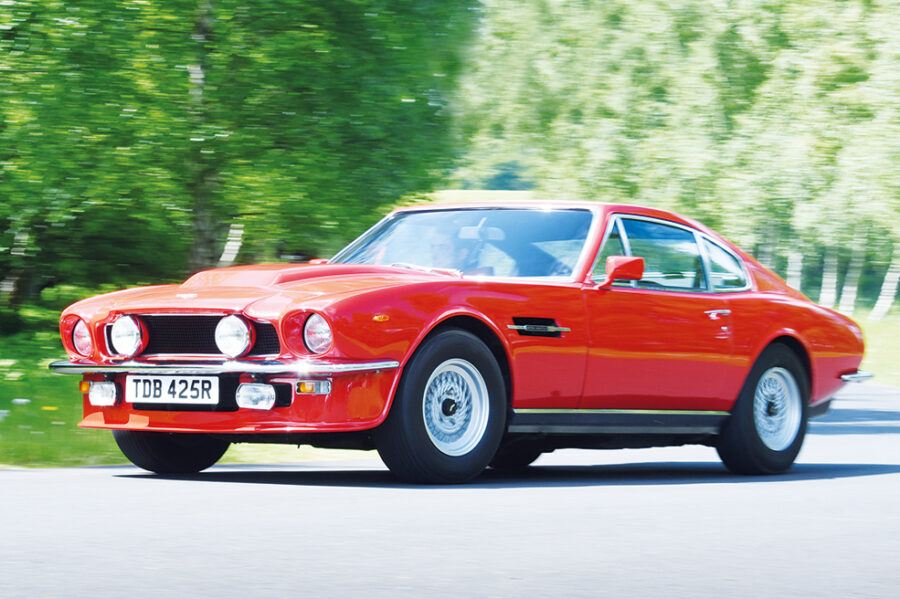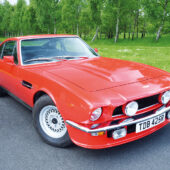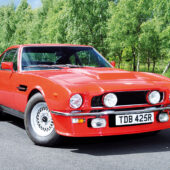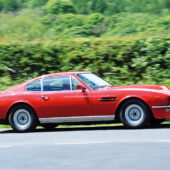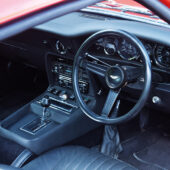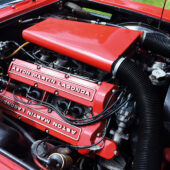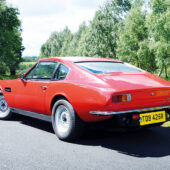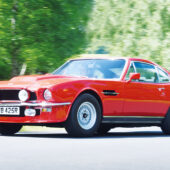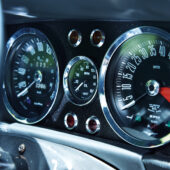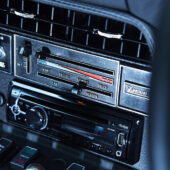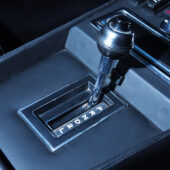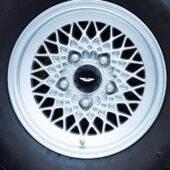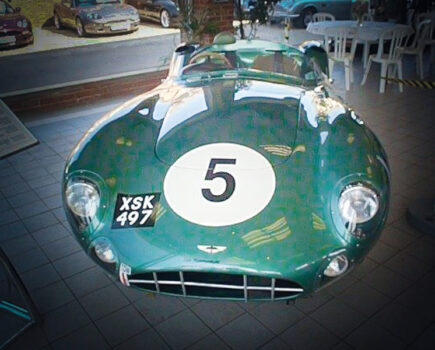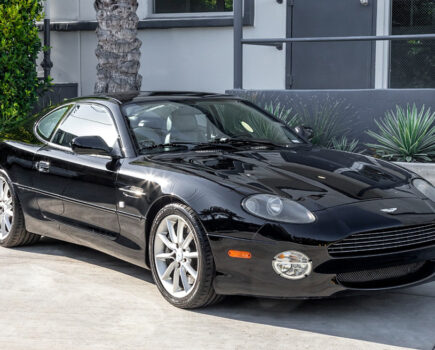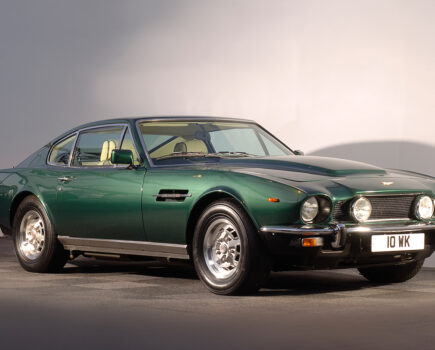If the Aston Martin V8 Vantage is the first British supercar, then this 1976 prototype is the origin of the species. We get behind the wheel
Words and images: Paul Walton
There are some important individual cars that represent the long and varied history of the British automobile industry, cars such as Old Number One, the earliest known MG that was made in 1926, the first production Mini from 1959 or the oldest known Range Rover prototype – the Velar – that was made a year before the model’s 1970 debut. But I’d include another on to that list of luminaries; the red V8 Vantage featured here. Not only as an early prototype is it the first of the breed but with the model often considered to be Britain’s first genuine supercar, it’s just as important as Britain’s first true city car or SUV.
Yet unlike the others mentioned earlier, the Vantage wasn’t a new car, far from it. A variation of the Aston Martin V8 that had been introduced in 1972 which in turn was a development of the V8-engined DBS, its origins go back to the William Towns-designed six-cylinder model of 1967.
Aston’s engineers knew this, but they also recognized the company didn’t have the resources to develop a new car. After going bankrupt in December 1974, the factory had shut down and all 500 members of staff were laid off. But in April 1975 the receiver sold the company for £1.05m to a trio of businessmen, with car production restarting the following September.
Following the second generation of the Lagonda saloon announced at the 1976 British Motor Show, Aston received so many orders, the new management felt it was time to phase out the coupe over the next couple of years. To try and keep this now old car relevant for a little longer, it would receive two stages of development.
Stage one included the 5.3 V8 receiving new camshafts which had a polynomial profile making the valve gear quieter and also eliminating the dip in the power curve at 2,500rpm. At the same time, the valves were given five degrees more overlap on the inlet side, raising the power peak to 6,000rpm. These updates didn’t actually arrive until June 1977, four months after Stage two.
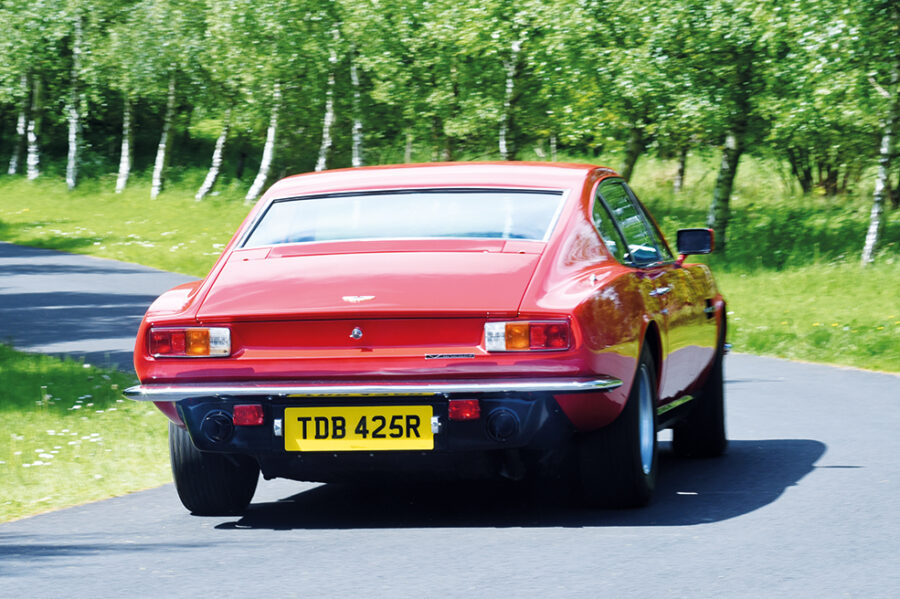
These came about due to the Lagonda saloon’s low nose which required a smaller, flatter airbox, and a modified inlet manifold, which robbed the V8 of both power and torque. As a way to give the engine more performance, the Lagonda’s V8 was given new heads with significantly larger valves which when coupled with high-lift cams and larger 48 IDF Weber carburettors with revised inlet manifolds, larger diameter trunking and hotter spark plugs, the engine was able to deliver around 375bhp, an increase of 70bhp. This hotter engine was then destined for a new, faster version of the V8 and first tried in a standard car that was apparently indistinguishable from a standard model.
There was also stiffer suspension, spacers for the rear wheels, the adoption of Koni shock absorbers and wider tyres (255 x 60). It differed physically from the standard V8 by a front air dam, tail spoiler, Perspex headlamp covers (although these were soon dropped), and twin 7in Cibie spotlights recessed into the grille.
Around the same time, marque specialist Robin Hamilton was developing his RHAM/1 Le Mans car and Aston paid for a wind tunnel session to help him develop the aerodynamic aids. At the same time, Aston’s designers tested the aerodynamics of a new spoiler and air dam destined for the new car that was fitted with a standard V8. After combining the results of both they created the production version which had a ten percent reduction in drag and almost no lift, which was aided by blanking off the radiator grille that had little effect on cooling. It’s because of the two cars being developed together, the road car closely resembled the racing one.
The wind tunnel tests resulted in the radiator grille being blanked off since it increased coolant temperature at idle from 85 to 95 degrees, which was the optimum temperature for engine efficiency.
The first car to receive the full treatment was a 1976 grey V8 coupe, 11470, that had been the factory demonstrator and would carry on in that role. However, as we’ll see, others were used for different areas of development.
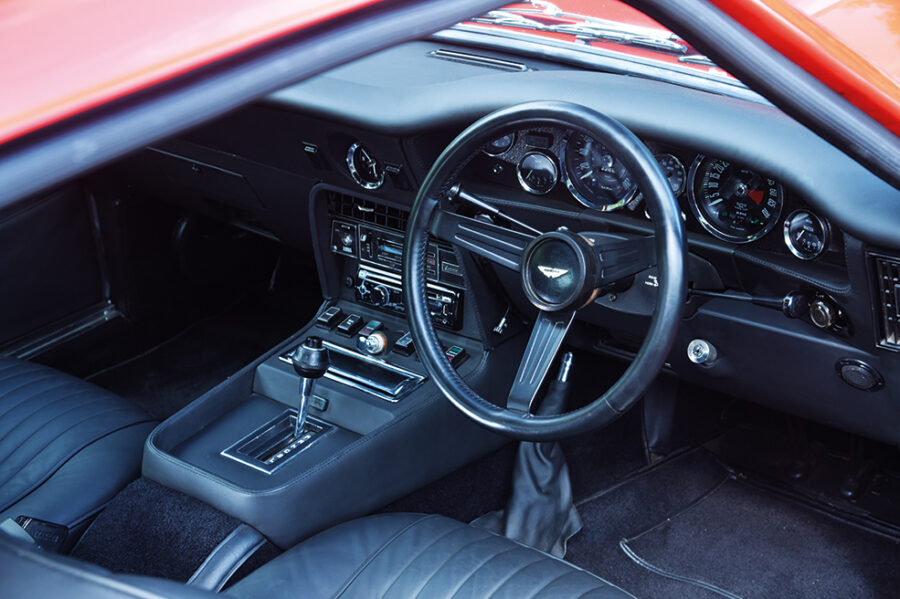
There was only one name the new car (that would sit along the standard V8) could be called; Vantage. Although dormant since 1973 and the last of the six-cylinder DBSs, the name still denoted faster Astons and therefore resonated with customers.
Similar to the first Vantage from 1950, the V8 version was initially envisioned as a conversion kit to be installed by the Aston Martin Service department at Newport Pagnell. But after a couple of cars were modified, it quickly became a model in its own right.
When the V8 Vantage debuted in early 1977, at £20k it was a whopping £3,000 more than the entry V8. To put that into perspective, in 1977 a Ford Escort RS Mexico was a little over £3k. But as Autocar said in its 19 February 1977 issue, “In a car of this class, there will always be a handful of owners capable of using, as well as demanding, even more power. This is the market the Vantage is aimed at.”
Aston Martin reckoned the car could reach 60mph in 5.3 seconds – one-tenth of a second quicker than the Ferrari Daytona – and with a 170mph top speed, making it the UK’s first true supercar and the fastest production four-seater in the world.
But when Motor magazine tested a Vantage in 1978, it couldn’t get past 148mph while the best time to 60mph was half a second off Aston’s claims.
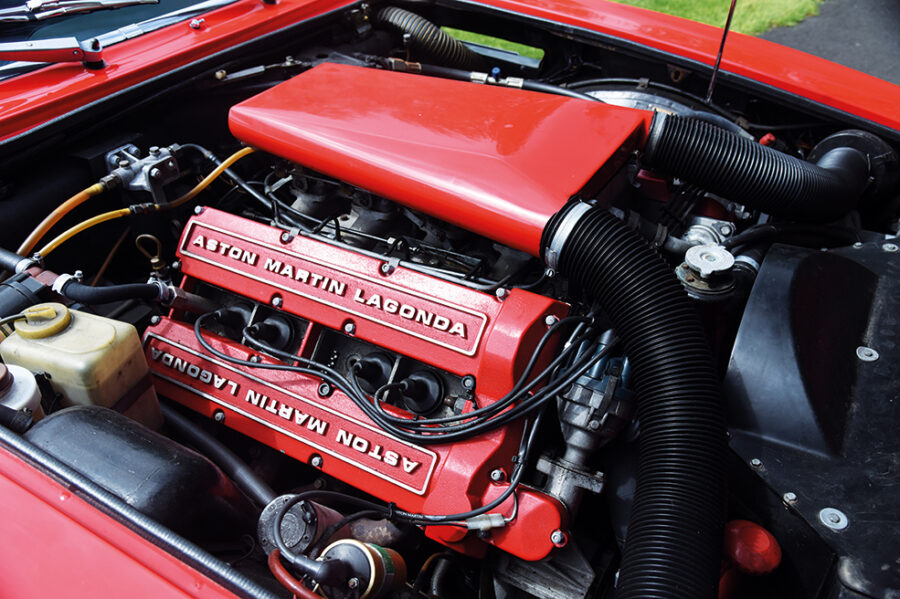
Yet it was still a big bruiser of a car and represented something new for a UK manufacturer. “A new performance standard has been set amongst so-called ‘supercars’”, confirmed Motorsport magazine in its April 1978 issue. “And it originates not in Modena or Stuttgart, but in urban Newport Pagnell. For the most breathtakingly exciting, adrenalin churning example of all that rarefied breed, indeed the fastest accelerating current production car in the world is the Aston Martin Vantage.” Future supercars such as the Jaguar XJ220, TVR Cerbera and McLaren F1 all followed what the Vantage had started.
With the two stages giving the V8 model the shot in the arm it needed and together with several other updates throughout its lifetime, the V8 stayed in production until 1989, ironically only a year before the Lagonda came to an end. But due to its cost and extreme power the Vantage only ever sold in relatively tiny numbers; in 12 years, a mere 342 saloons (how Aston described this obvious two-door coupe) were produced plus 192 open Volantes that arrived in 1986.
While these figures represent the model’s end, located in County Durham is an example of its beginning. Built in late 1976 and first registered in November the same year, according to Aston Workshop, chassis 11533 was one of Aston Martin’s development models for the Vantage. Starting life as a standard V8 saloon, although the 5.3-litre engine was left in the same state of tune as the entry V8, it was given the majority of the external differences that set the Vantage apart including the front air dam plus the driving lights inset into the grille. There’s also a full Vantage stainless steel exhaust while the front suspension has been upgraded to Vantage specification for improved road holding.
Later used as a demonstrator at Aston Martin’s prestigious Sloane Street showrooms in London, it was loaned to the Duke of Westminster while he was awaiting the delivery of his Lagonda saloon.
It’s recently received a full recommission by marque experts, Aston Workshop in County Durham, where it’s currently for sale. This included a full bare metal respray plus a refurbishment of the chassis while the suspension was uprated with adjustable shock absorbers, a rear anti-roll bar, all new bushes and stopping power was improved thanks to AP Racing brakes. The engine bay was also refurbished and colour-coded to match the exterior while the interior was fully retrimmed in hide plus there’s new carpets and a new steering wheel.
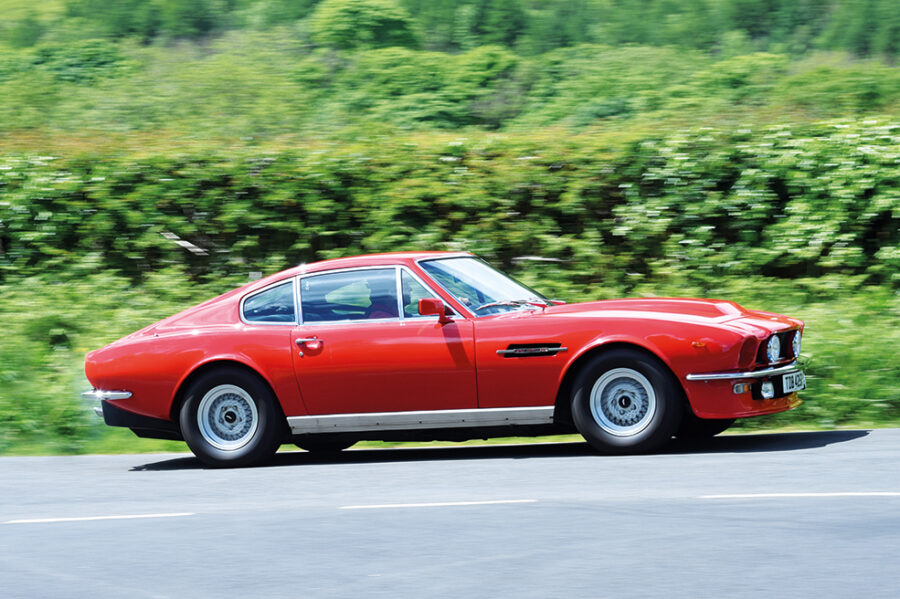
Although in my admittedly limited experience it’s slightly unusual to see a red Vantage, the bright, almost whimsical colour at odds with the car’s butch, masculine stance, but it’s still a handsome, distinctive car. As Motorsport magazine said while testing an identical example for its April 1978 issue, “Its appearance in the mirrors moves dawdlers out of the way faster than anything I can recall including the Countach.”
It’s worth noting the car now wears the lattice-type of alloy wheel that arrived as part of a 1983 update rather than the distinctive GKN wheels it would have originally worn, which makes the car appear slightly more modern than it is.
With permission to take this historically important Aston for a spin, I climb in behind the wheel, the door shutting with a pleasing mechanical thunk. Since it was built in 1976 and therefore not receiving the updates to the interior that arrived the following year, the black vinyl dash and classic white-on-black Smiths dials make the interior appear older than it is, looking more like a car from the Sixties rather than a decade later. Yet it’s comfortable and offers surprisingly high levels of visibility for a low-slung coupe… sorry, saloon.
That’s enough looking; the fantastic roads in County Durham are beckoning. The 5.3-litre V8 churns over a couple of times before it starts filling the cabin with a deep, gravelly growl. Unlike the production Vantages that were only (officially) available with the five-speed manual, this largely standard V8 is mated to a lazy and under-geared three-speed automatic.
After pulling the tall lever down into drive and squeezing the throttle, despite the standard 5.3-litre V8 having a little over 300bhp, I can’t say it’s overly fast and feels, dare I say it, almost ponderous. That is until I give the pedal a proper shove which forces the three-speed ‘box to kick-down into second with a jolt. Suddenly the car wakes up and delivers a much harder acceleration that’s more in keeping with the stylised Vantage badge on the rump. And with the V8 having around 330 lb ft of torque (Aston was always reticent to release the figures so it’s not known for sure), it’ll do so from low speeds and will keep going long after other, lesser performance models have given up.

The speed is heightened by two things; firstly the magnificent roar of the V8 which sounds like a fighter plane. And secondly, the magnificent view over the long, wide bonnet which is dominated by a huge bulge.
Through the surprisingly small wheel, the steering is a little vague and I need to concentrate hard to keep it in a straight line, especially at speed. But it’s also nicely weighted and with plenty of grip through the fat, sticky Avon tyres, I’m able to take long, sweeping corners reasonably quickly before nailing the throttle on the exit when, thanks to all that torque, the car picks up speed with little hesitation. But today is perfectly dry with barely a cloud in the sky; with so much power running through the rear wheels it would be a different story in the wet when I imagine the car would quickly become a real handful.
From road to racing, standard to modified, I’ve driven all kinds of classic vehicles in the 23 years I’ve been messing around with cars for a living but in terms of experience, few can match an Aston V8. It’s a car I’ve always wanted to drive and unlike others that have been on my wish-list, it doesn’t disappoint.
Although supercars have always sold in tiny numbers compared to compact cars or off-roaders, there’s no denying the importance of this Vantage prototype. But of course, unless it heads into a museum like Old Number One, the first production Mini or the oldest Range Rover, it won’t receive the wider recognition it deserves. As the start of something important, its place in the history of the British car industry is still assured.

